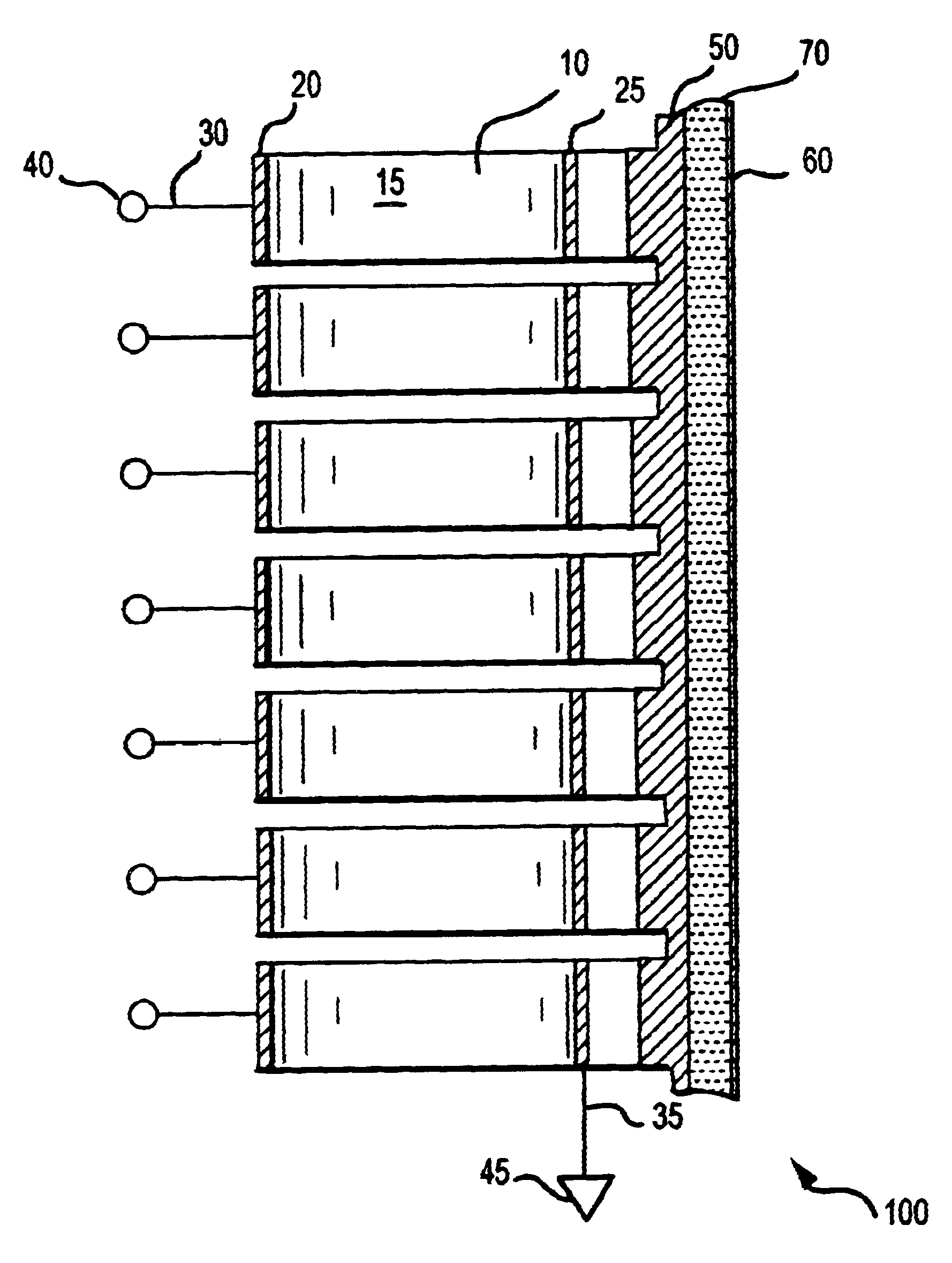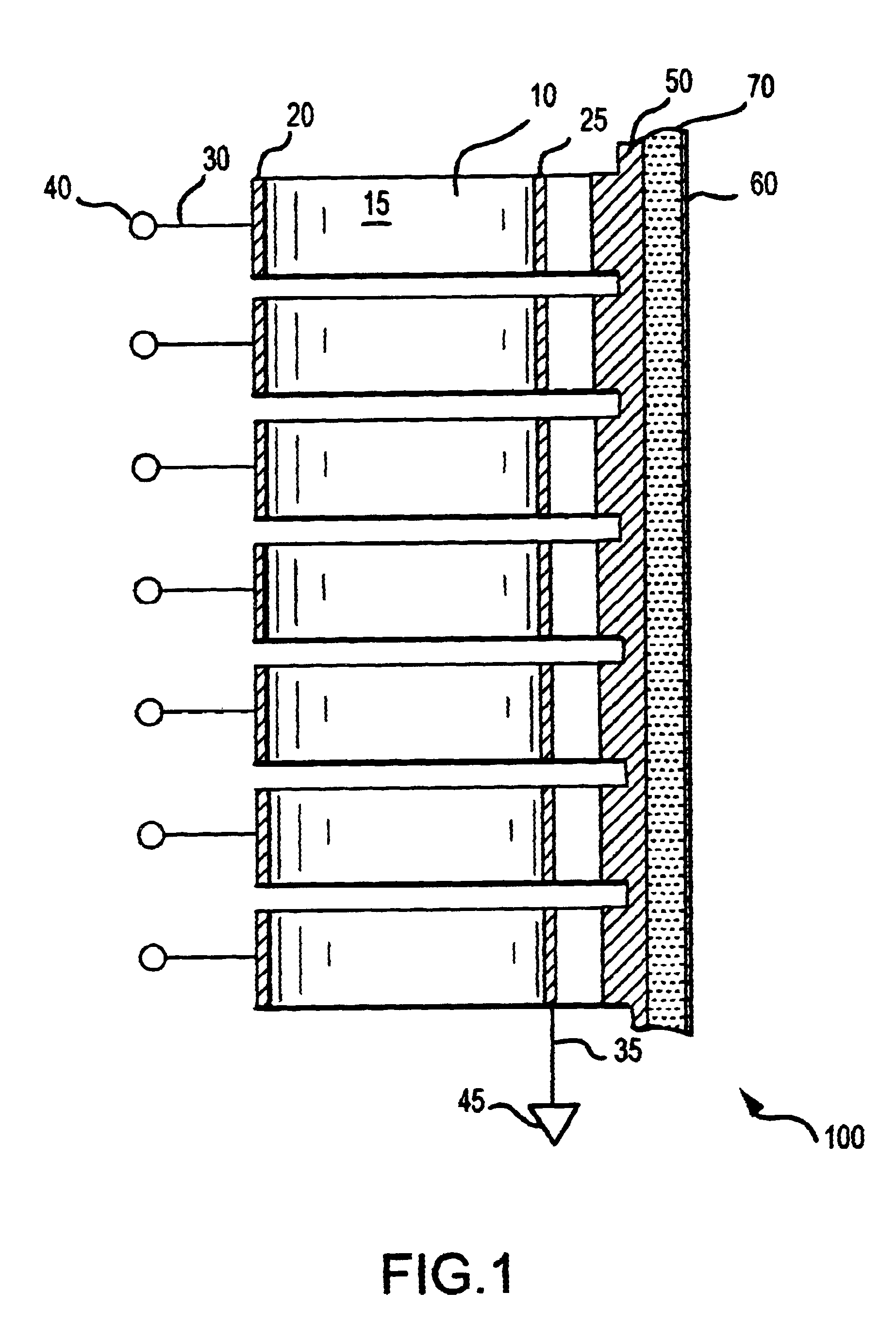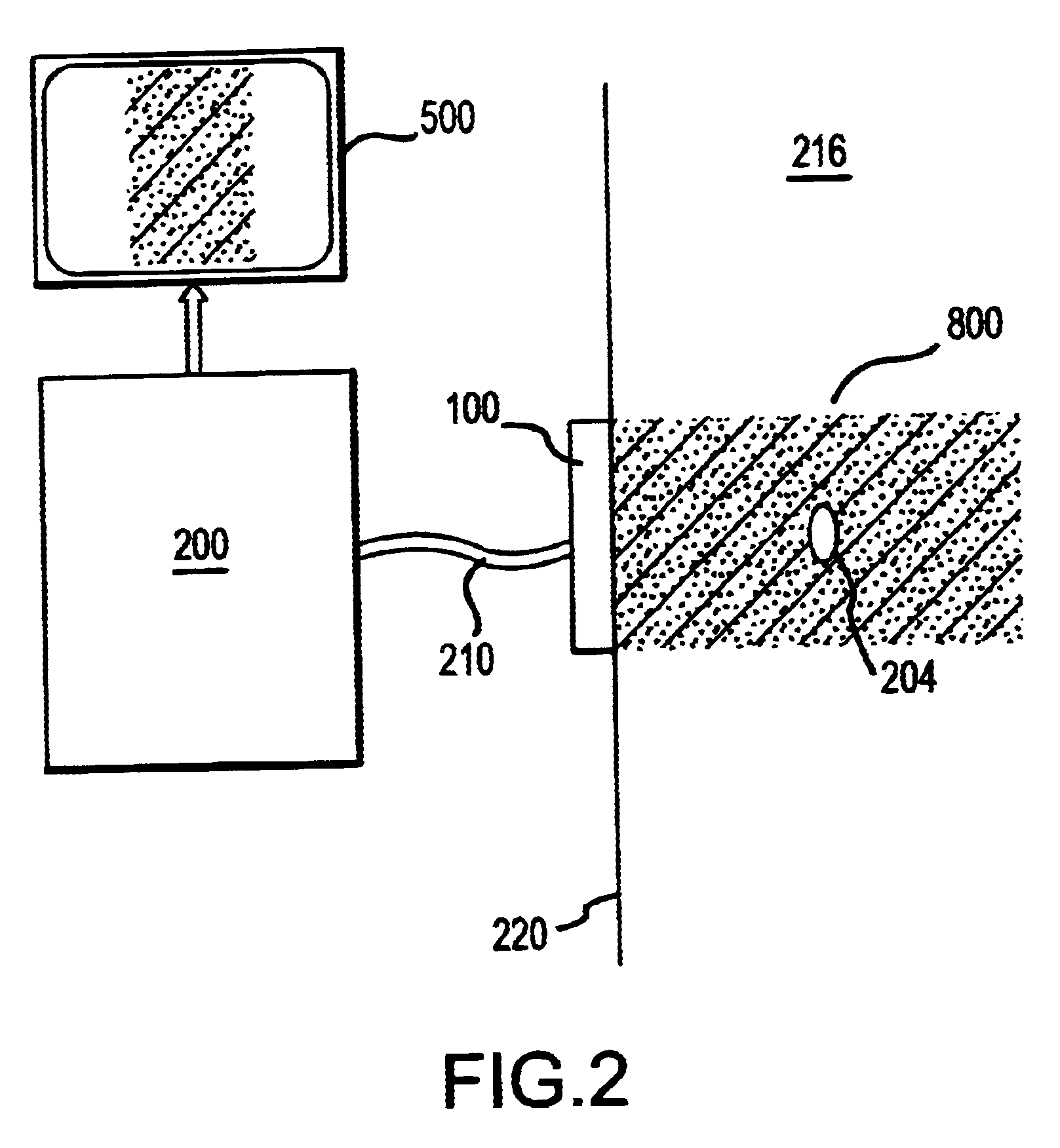Method and apparatus for safety delivering medicants to a region of tissue using imaging, therapy and temperature monitoring ultrasonic system
a technology of ultrasonic system and medical device, which is applied in the direction of ultrasonic/sonic/infrasonic image/data processing, ultrasonic/sonic/infrasonic diagnostics, therapy, etc., can solve the problems of limited use of surface treatment or invasive procedures, poor control of energy deposition, and high absorption of medicants in tissu
- Summary
- Abstract
- Description
- Claims
- Application Information
AI Technical Summary
Problems solved by technology
Method used
Image
Examples
Embodiment Construction
A system for achieving successful ultrasonic therapy procedures in accordance with the present invention includes four major subsystems or components. Specifically, they are an acoustic transducer assembly, an imaging subsystem, a therapy subsystem (also referred to as a "therapeutic heating subsystem"), and a temperature monitoring subsystem, which are illustrated in FIGS. 1 through 4, respectively. Although not shown in the drawing figures, the system further includes components typically associated with a therapy system, such as any required power sources, memory requirements, system control electronics, and the like.
With reference to FIG. 1, the acoustic transducer assembly 100 included in the system of the present invention will be described in detail below. As shown in the cross-sectional view of FIG. 1, the acoustic transducer assembly 100 includes a piezoelectric ceramic plate 10. The air-backed side of the ceramic plate 10 may be partially diced to have a plurality of curve...
PUM
 Login to View More
Login to View More Abstract
Description
Claims
Application Information
 Login to View More
Login to View More - R&D
- Intellectual Property
- Life Sciences
- Materials
- Tech Scout
- Unparalleled Data Quality
- Higher Quality Content
- 60% Fewer Hallucinations
Browse by: Latest US Patents, China's latest patents, Technical Efficacy Thesaurus, Application Domain, Technology Topic, Popular Technical Reports.
© 2025 PatSnap. All rights reserved.Legal|Privacy policy|Modern Slavery Act Transparency Statement|Sitemap|About US| Contact US: help@patsnap.com



